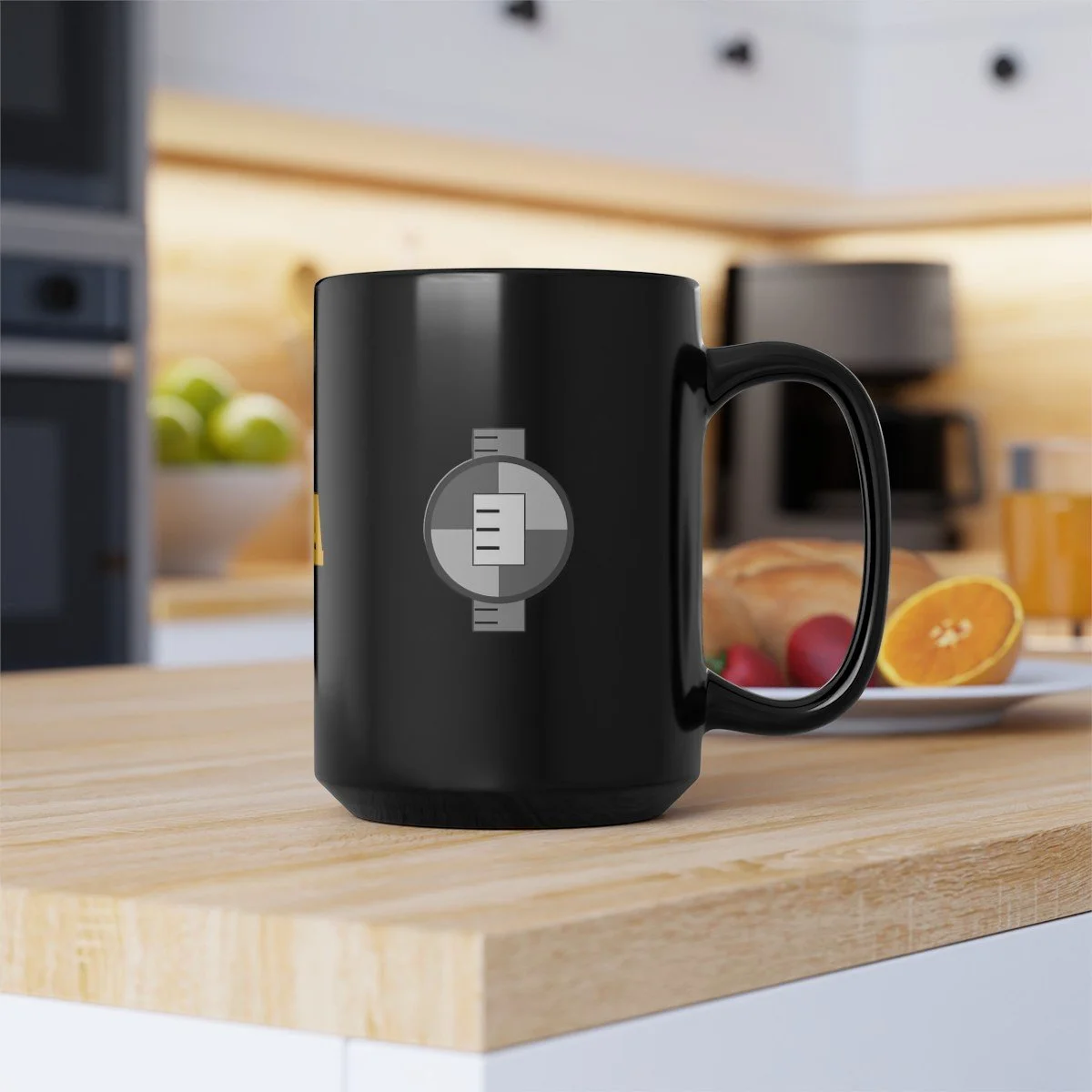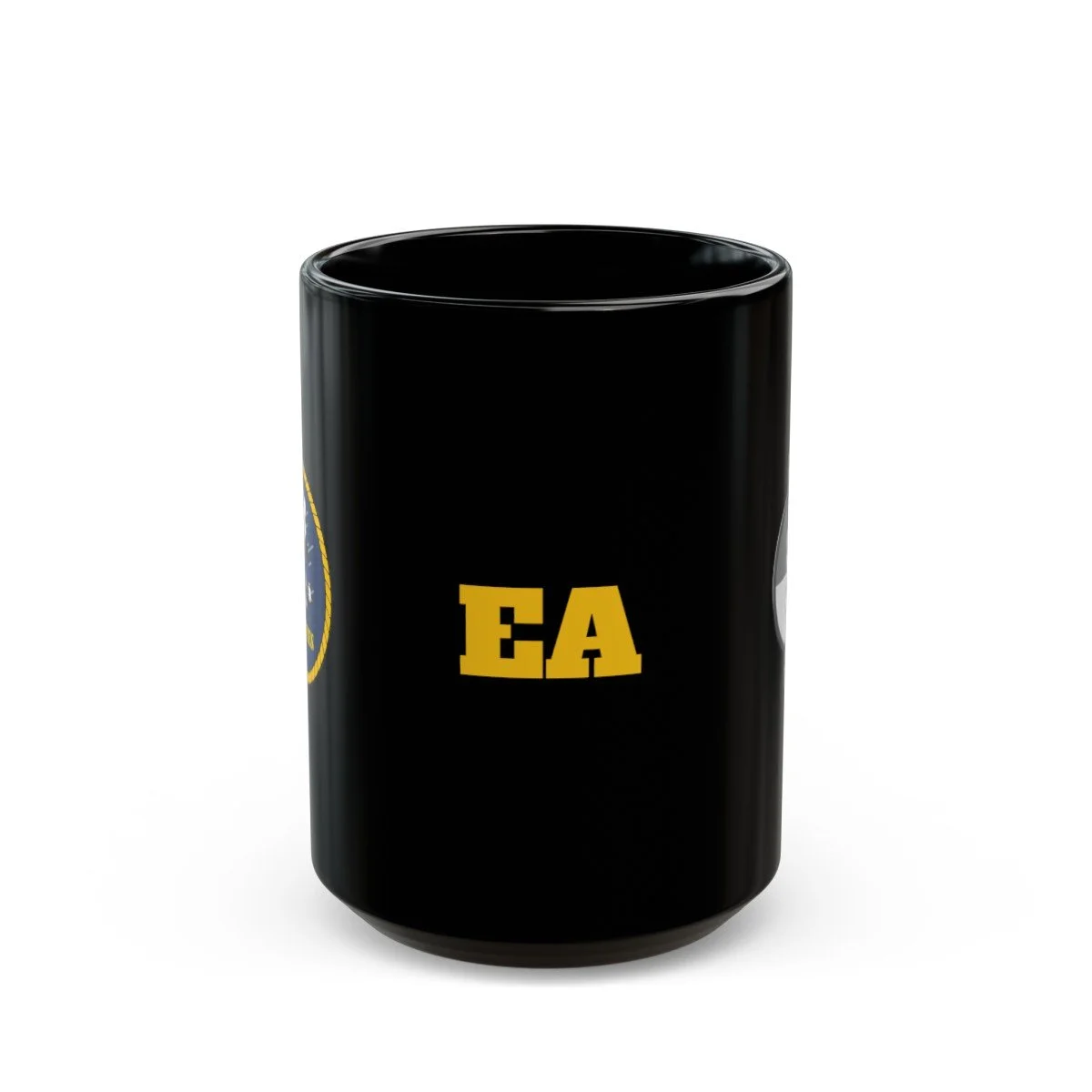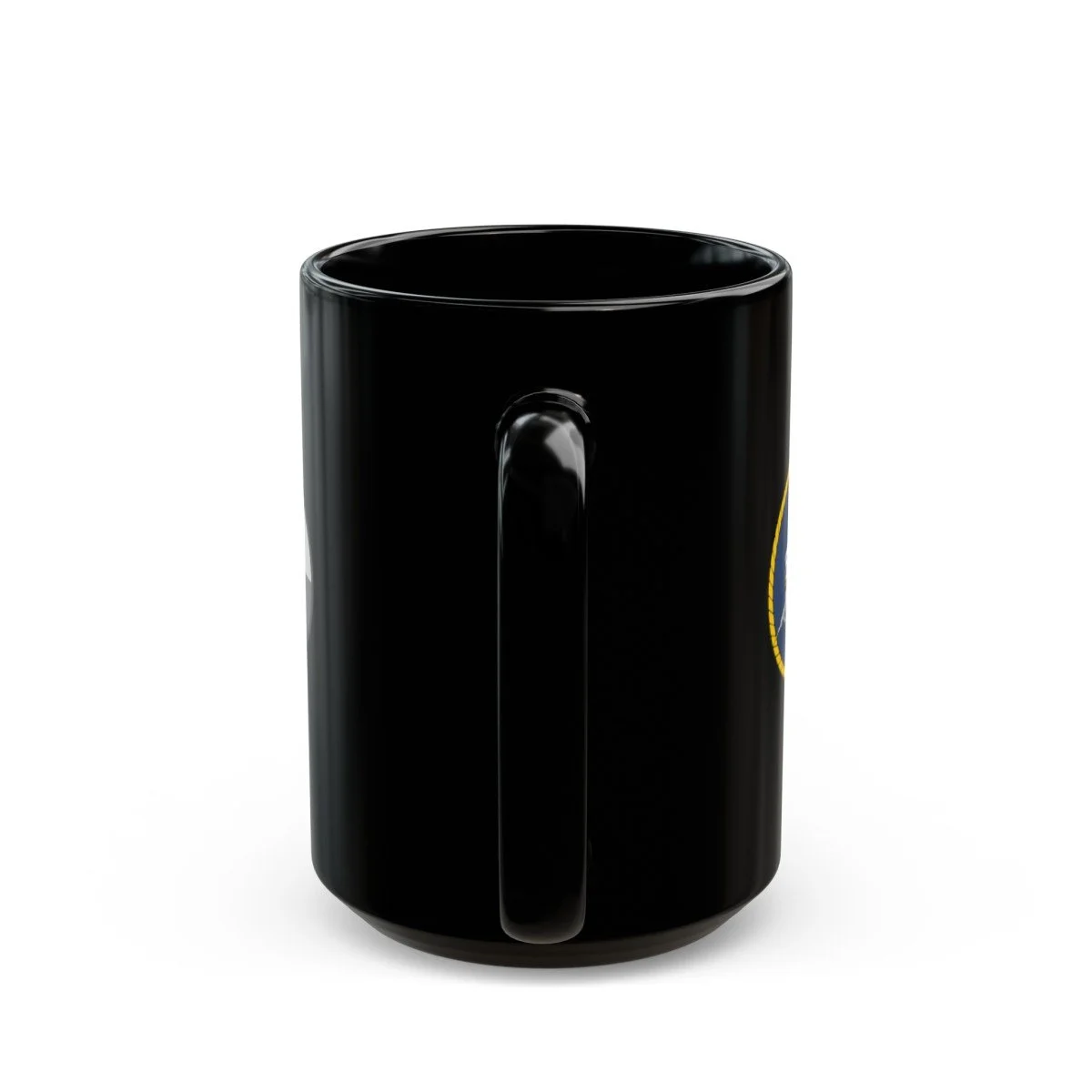 Image 1 of 4
Image 1 of 4

 Image 2 of 4
Image 2 of 4

 Image 3 of 4
Image 3 of 4

 Image 4 of 4
Image 4 of 4





Navy Seabee Engineering Aid (EA) / Seabee Logo 15 oz Glossy Black Ceramic Coffee Mug
Sip your coffee proudly from your Seabee Engineering Aid (EA) 15 oz Mug. It also sports the Seabee logo. It’s BPA and lead-free, microwave and dishwasher-safe, and made of black durable ceramic.
History of the Seabee Engineering Aid (EA)
The Engineering Aid (EA) rating in the U.S. Navy has evolved through several name changes since its inception as a Carpenter's Mate (Surveyors). In 1948, it became known as Surveyor, and in 1959, it was renamed Engineering Aide. The final adjustment to its current name, Engineering Aid, occurred in 1960. The Navy Enlisted Manning Code (EMC) for the EA rating is H140. Engineering Aids play a crucial role in supporting construction engineers by assisting in the development of final construction plans. They are responsible for conducting land surveys and preparing various types of maps, sketches, drawings, and blueprints for a wide range of construction projects including roads, airfields, buildings, waterfront structures, pipelines, and drainage systems. Additionally, EAs estimate construction costs and perform quality assurance tests on construction materials like soils, concrete, and asphalt. They also engage in various engineering technician functions, ensuring the quality and accuracy of construction projects. The Engineering Aid class "A" school, which lasts approximately 15 weeks, is held at Fort Leonard Wood, Missouri. This rating requires enlistees to commit to a five-year (60-month) enlistment program. In their duties, EAs are involved in a wide array of tasks including conducting surveys for construction sites, preparing detailed drawings and maps, calculating the volume of materials required for projects, and laying out construction work. They operate and maintain surveying and laboratory test instruments, prepare architectural and engineering drawings, design systems for grading and drainage, and conduct tests and quality control inspections for construction projects. Additionally, they are proficient in reading and interpreting blueprints, preparing project sketches, and making estimates for materials, labor, and equipment.
Sip your coffee proudly from your Seabee Engineering Aid (EA) 15 oz Mug. It also sports the Seabee logo. It’s BPA and lead-free, microwave and dishwasher-safe, and made of black durable ceramic.
History of the Seabee Engineering Aid (EA)
The Engineering Aid (EA) rating in the U.S. Navy has evolved through several name changes since its inception as a Carpenter's Mate (Surveyors). In 1948, it became known as Surveyor, and in 1959, it was renamed Engineering Aide. The final adjustment to its current name, Engineering Aid, occurred in 1960. The Navy Enlisted Manning Code (EMC) for the EA rating is H140. Engineering Aids play a crucial role in supporting construction engineers by assisting in the development of final construction plans. They are responsible for conducting land surveys and preparing various types of maps, sketches, drawings, and blueprints for a wide range of construction projects including roads, airfields, buildings, waterfront structures, pipelines, and drainage systems. Additionally, EAs estimate construction costs and perform quality assurance tests on construction materials like soils, concrete, and asphalt. They also engage in various engineering technician functions, ensuring the quality and accuracy of construction projects. The Engineering Aid class "A" school, which lasts approximately 15 weeks, is held at Fort Leonard Wood, Missouri. This rating requires enlistees to commit to a five-year (60-month) enlistment program. In their duties, EAs are involved in a wide array of tasks including conducting surveys for construction sites, preparing detailed drawings and maps, calculating the volume of materials required for projects, and laying out construction work. They operate and maintain surveying and laboratory test instruments, prepare architectural and engineering drawings, design systems for grading and drainage, and conduct tests and quality control inspections for construction projects. Additionally, they are proficient in reading and interpreting blueprints, preparing project sketches, and making estimates for materials, labor, and equipment.
